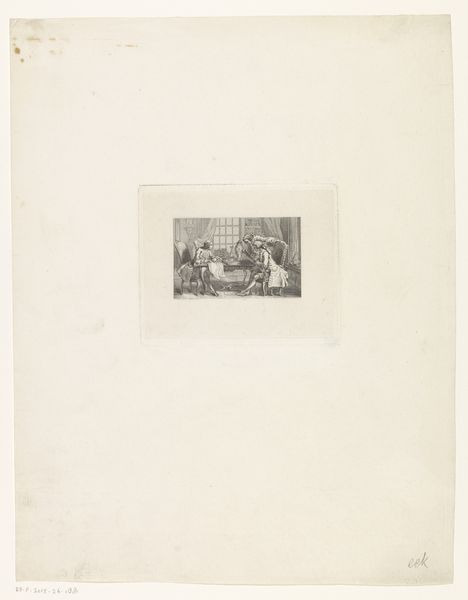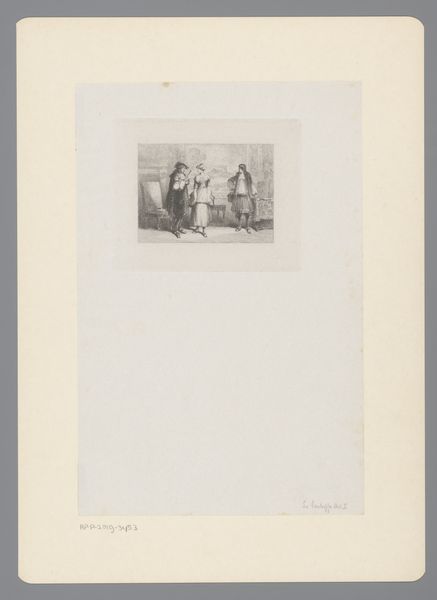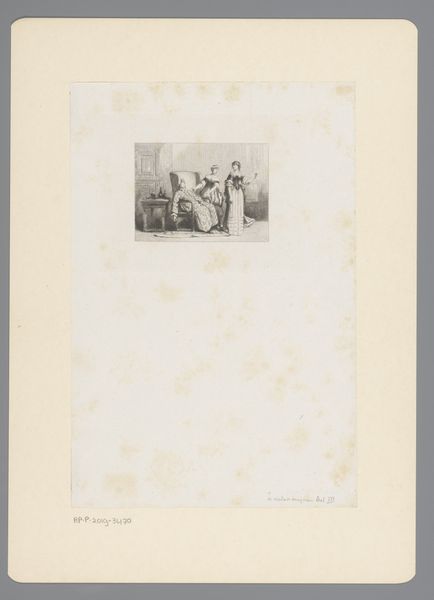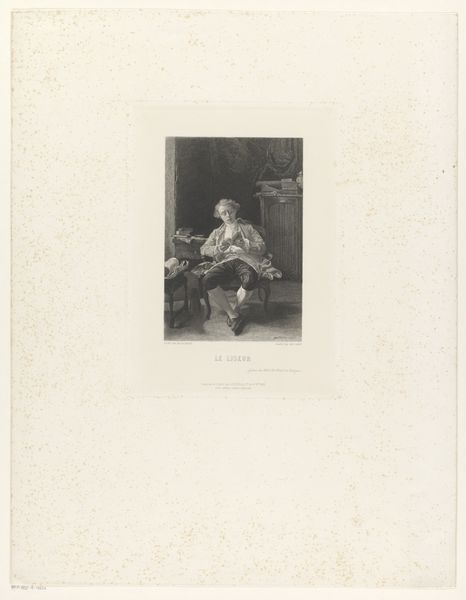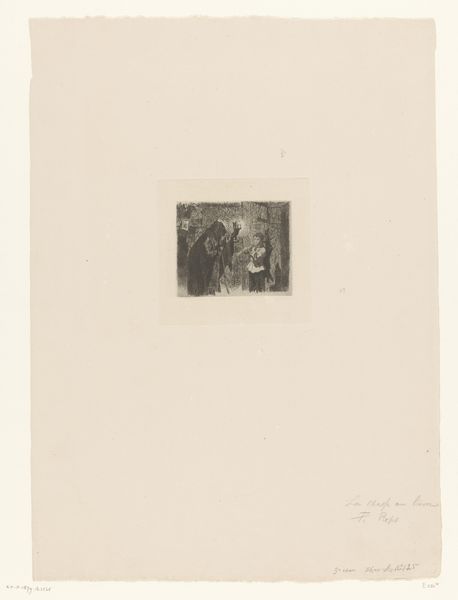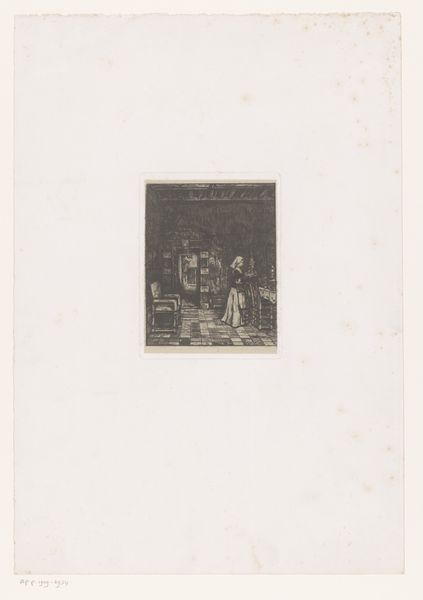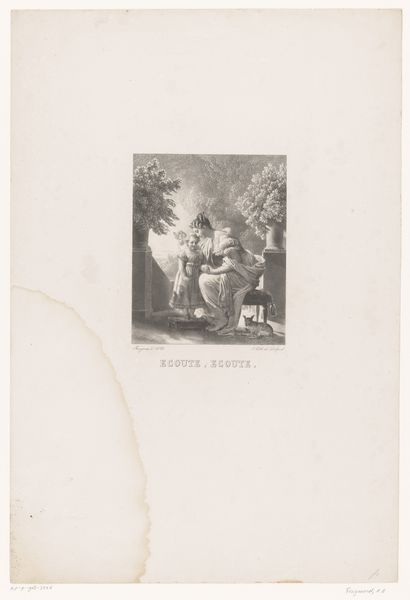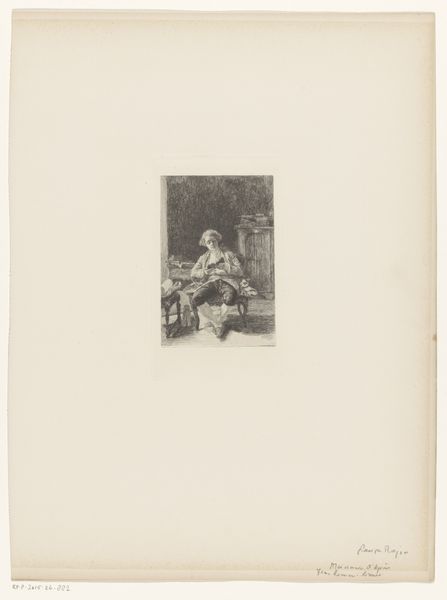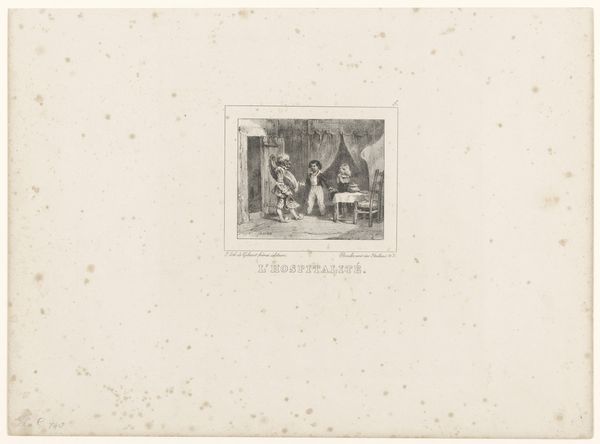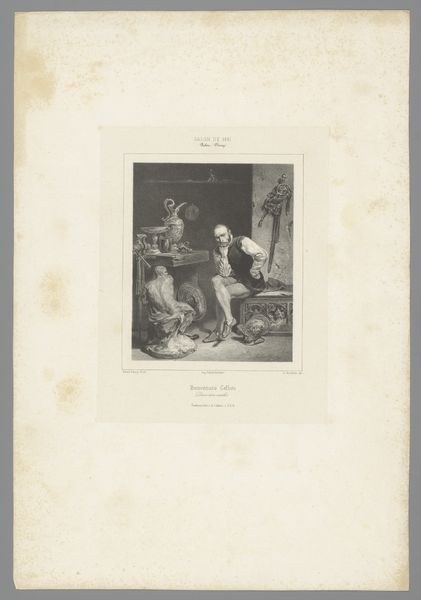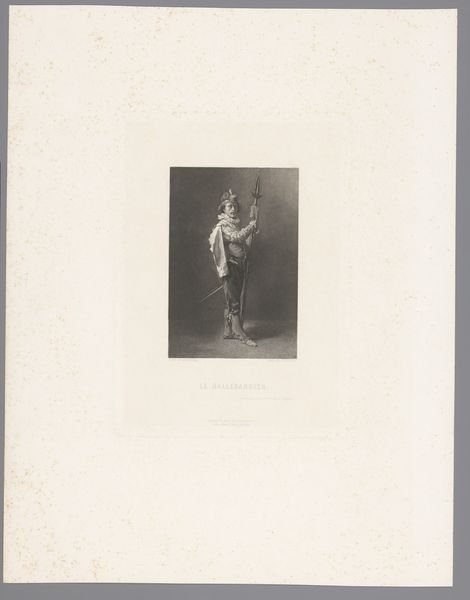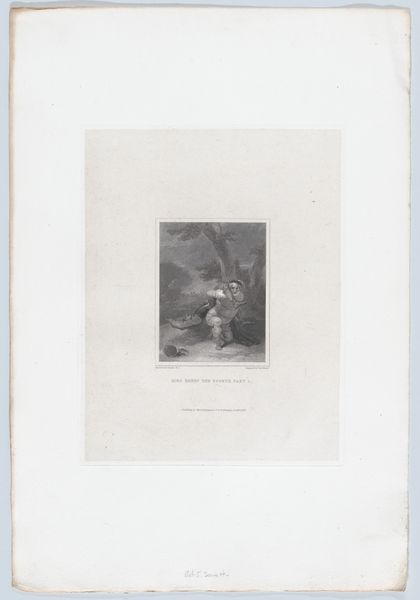
Dronkaard met een fles wijn en een vol glas in de kroeg 1834
0:00
0:00
nicolastoussaintcharlet
Rijksmuseum
drawing, lithograph, print, paper, ink
#
portrait
#
pencil drawn
#
drawing
#
light pencil work
#
lithograph
#
ink paper printed
# print
#
caricature
#
figuration
#
paper
#
ink
#
romanticism
#
line
#
pencil work
#
genre-painting
Dimensions: height 314 mm, width 233 mm
Copyright: Rijks Museum: Open Domain
Curator: So here we have Nicolas Toussaint Charlet's "Dronkaard met een fles wijn en een vol glas in de kroeg," or "Drunkard with a bottle of wine and a full glass in the pub", a lithograph from 1834. It depicts, as you can see, a rather disheveled man enjoying his wine. Editor: Yes, he does seem to be enjoying himself! I’m intrigued by the lithographic process, how it captures so much detail. What’s your take on this work, looking at its production? Curator: What strikes me is the access that the print medium provides. Lithography allowed for relatively inexpensive reproduction and distribution. Consider Charlet's choice of subject, a "drunkard." Through prints, this image, and the class it represents, enters a wider field of consumption and observation. The materials themselves - the ink, the paper - become vectors of social commentary, democratizing art. Do you see any critique implied in this piece? Editor: Well, the subject is being made fun of, or at least lightly satirized, yet there's also an element of Romanticism that seems to almost idealize this figure in his, let’s say, leisure. Perhaps the wide distribution implies a commentary on class and access to leisure through consumption. Was Charlet critiquing the economic forces that shaped leisure, or just portraying it? Curator: Exactly! By reproducing this scene en masse, the lithograph turns the drunkard's leisure—itself enabled by material excess, wine, and glass—into a commodity for the viewer's consumption. It asks us to consider what it means to possess an image of working-class pleasure, made available through mass production. Editor: So, in essence, the lithograph makes us question not just the drunkard’s choices, but our own consumption and the social structures underpinning both. Fascinating! I’ll certainly think more about materials as tools of both expression and social dialogue. Curator: Precisely. It encourages a wider look into the relationship between the labor and art’s cultural accessibility in that era.
Comments
No comments
Be the first to comment and join the conversation on the ultimate creative platform.
